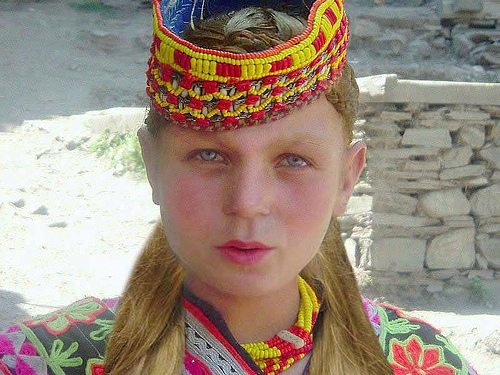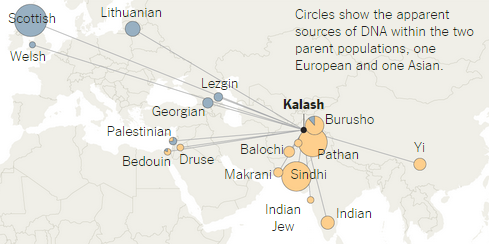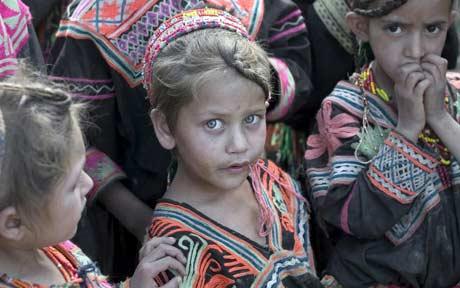Corona pandemic has reduced the melting of Himalayan glaciers
Clean air would make water supplies safer for billions of people
IMAGE:
SMOG OVER NORTHERN INDIA ON THE EDGE OF THE HIMALAYAN GLACIERS.
view moreCREDIT: NASA EARTH OBSERVATORY IMAGE BY JOSHUA STEVENS, USING VIIRS DATA FROM NASA EOSDIS/LANCE
Pune/Leipzig. Reducing air pollution to levels similar to those during the coronavirus pandemic could protect the glaciers in the Himalayas and prevent them from disappearing by the end of the century. This is the conclusion reached by an international research team analysing the situation during the COVID-19 lockdown in 2020. The cleaner air has ensured that less soot has been deposited on the glaciers, resulting in 0.5 to 1.5 mm less snow melting per day. The rapid retreat of glaciers and the loss of snow cover already pose a threat to the sustainable water supply of billions of people in Asia who live in the catchment areas of rivers such as the Indus, Ganges and Yangtze. If emissions of air pollutants such as soot could be reduced to at least the level of the lockdowns, snowmelt could be reduced by up to half. A switch to clean energy supplies and lower-emission modes of transport would therefore bring significant benefits for sustainable water supplies, agriculture and ecosystems in large parts of Asia, the researchers write in the journal Atmospheric Chemistry and Physics (ACP).
The mountains of the Hindu Kush Himalayas (HKH) and the highlands of Tibet in Central Asia form the largest snow-covered region outside the poles. The meltwater from these glaciers feeds rivers in India and China, which fuel agriculture, hydropower generation and the economies of these countries. The Himalayan snowmelt in spring provides around half of the annual fresh water for around 4 billion people in South Asia and East Asia. But resources are dwindling: Global warming has already led to a loss of around 40 per cent of the Himalayan glacier area compared to the Little Ice Age in the Middle Ages. With the exception of a few Karakoram glaciers, the snow mass there has also decreased significantly over the last 30 years. Model simulations for extreme scenarios show that the melting snow in the Himalayas could cause the glaciers there to disappear by the end of the 21st century. This is worrying news for the water supply of several billion people.
The fact that glaciers are becoming thinner and thinner is partly due to climate change with higher air temperatures and changes in precipitation - in other words, long-term causes that will take decades to combat. However, short-term factors such as the distribution and deposition of light-absorbing particles such as dust and soot (black carbon (BC)) also play a major role in glacier melting. Earlier studies have already shown that soot melts the snow on glaciers more than greenhouse gases in the atmosphere. The increasing energy demand of densely populated South Asia has greatly increased emissions of greenhouse gases and soot particles in recent decades, leading to increased darkening and melting of snow.
The economic slowdown caused by the lockdown measures during the coronavirus pandemic led to a drastic decline in passenger and freight transport, industrial emissions and energy consumption in this region in 2020. As a result, air pollution with greenhouse gases and especially soot also decreased significantly: satellite observations showed cleaner snow with almost a third less light-absorbing pollution during the lockdown in Asia between March and May 2020. This led to a decrease in snowmelt of 25 to 70 mm in 2020 - compared to the 20-year average for the months of March to May in the western Himalayas. The changes in snow absorption and surface albedo thus ensured that around 7 cubic kilometres of meltwater remained in the Indus catchment area.
The international team of researchers from India, Germany and the UK used global simulations to analyse in detail the impact of reduced air pollution over high mountains in Central Asia during the COVID-19 lockdowns between March and May 2020: They used the ECHAM6-HAMMOZ chemistry-climate model, updated with an improved soot-snow parameterisation, to compare corona time with typical air pollution conditions. The corona simulations were performed with a COVID-19 emission inventory where emissions were calculated based on Google and Apple mobility data. Various observational data was also included in the new study: Snow cover and atmospheric opacity were determined using MODIS spectral data from NASA. These data were supplemented by solar photometer measurements from two Aerosol Robotic Network (AERONET) stations in Lahore (Pakistan) and Dushanbe (Tajikistan). The AERONET measurements in Dushanbe were part of the joint German-Tajik CADEX project from 2014 to 2016, in which the Academy of Sciences of Tajikistan and TROPOS jointly analysed mineral dust over Central Asia.
The ECHAM6-HAMMOZ model simulations show that the COVID lockdown in spring 2020 led to a cleaner atmosphere over the mountains of the Hindu Kush Himalayas and the highlands of Tibet. "The aerosol optical thickness (AOD), i.e. the atmospheric opacity, over this region decreased by around 10 per cent in April 2020 compared to before the pandemic. This is supported by measurements from NASA's Moderate Resolution Imaging Spectroradiometer (MODIS), which also show a reduction in AOD compared to the average of the last 20 years," reports Dr Suvarna Fadnavis from the Indian Institute of Tropical Meteorology (IITM). The decrease in soot was also observed in the ground-based measurements of the Aerosol Radiative Forcing Over India Network (ARFINET): over the Indian Gangetic Plain (>50%), Northeast India (>30%), the Himalayan regions (16%-60%) and Tibet (70%).
The reduction in anthropogenic air pollution led to less soot being deposited on the snow in large parts of the high mountains of Central Asia. According to this study, there were around 25 to 350 micrograms less soot per kilogramme of snow in spring 2020, which corresponds to up to a third of the soot concentration in the snow there. However, according to the model, soot concentrations in the snow have also risen sporadically in some areas in the Hindu Kush, the eastern Himalayas and the Kunlun Mountains. The seemingly paradoxical differences are due to the fact that soot interacts with solar radiation not only on the surface, but above all in the atmosphere. This leads to complex adjustments in atmospheric circulation and thus to changes in the transport and deposition of air pollutants. "Our simulations show that the decrease in soot concentration in the snow and the general reduction in air pollution and associated radiative effects reduced the short-wave radiative forcing at the surface by up to 2 watts per square metre in March to May 2020, resulting in less atmospheric warming. This lower warming of the snowpack and the tropospheric column is the combined effect of less soot in the snow and the changes in atmospheric concentrations of sulphate and soot," explains Dr Bernd Heinold from TROPOS. "In the model, we were able to show that the decrease in air pollution reduced snowmelt in spring 2020 by 0.5 to 1.5 millimetres per day and thus reduced the runoff meltwater in the year by up to half." The reduction in man-made pollution during the COVID-19 lockdown has therefore benefited the high mountains of Central Asia in many ways: increased reflectivity of the snow surface, reduced snowmelt and increased snow cover, as well as an increase in stored water due to reduced surface water runoff.
"Our results make it clear that of the two processes causing the retreat of the Himalayan glaciers - global climate change and local air pollution - a reduction in air pollution in particular could be a short-term help," emphasises Prof. Ina Tegen from TROPOS. "Even if we were to stop CO2 emissions immediately, temperatures would not initially fall. However, our results confirm the importance of reducing short-lived climate drivers such as soot and their complementary role in CO2 mitigation. Reducing air pollution to similar levels as during the COVID-19 lockdowns in 2020 could protect the Himalayan glaciers, which are otherwise at risk of disappearing by the end of the 21st century." Since 2000, the glaciers in the Himalayas have lost almost half a metre of ice per year. If air pollution could be reduced to the level it was at during the coronavirus pandemic, for example, then snowmelt could be reduced by up to half. Clean air measures would therefore not only benefit the health of billions of people in Asia, but also the water supply, agriculture and ecosystems in large parts of Asia.
Thick clouds of smoke from straw fires over India.
CREDIT
European Union, Copernicus Sentinel-3 data - Processed by COPERNICUSEU
The impacts of reduced pollution on snow brightening in the Himalayas and reduced surface water runoff, as observed during the 2020 COVID-19 lockdown period.
CREDIT
Fadnavis, S., Heinold, B., Sabin, T. P., Kubin, A., Huang, K., Rap, A., and Müller, R.: Air pollution reductions caused by the COVID-19 lockdown open up a way to preserve the Himalayan glaciers, Atmos. Chem. Phys., 23, 10439-10449, https://doi.org/10.5194/acp-23-10439-2023 , 2023. Figure 6 (c)
JOURNAL
Atmospheric Chemistry and Physics
METHOD OF RESEARCH
Case study
COI STATEMENT
At least one of the (co-)authors is a member of the editorial board of Atmospheric Chemistry and Physics. The peer-review process was guided by an independent editor, and the authors also have no other competing interests to declare.





